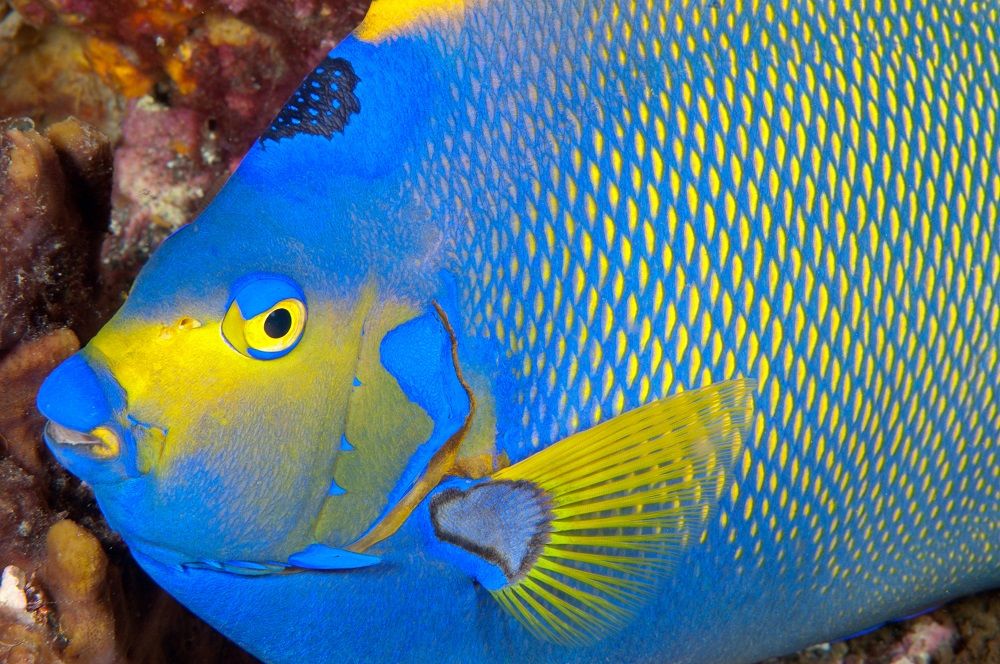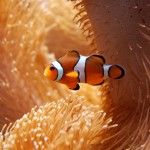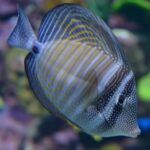Even for the folks who (unlike us) are not madly into fishkeeping, ‘angelfish’ is a familiar word. There are 7 genera and about 86 species of marine angels out there, each one more beautifully colored and spectacular than the next. If an angelfish doesn’t draw your eye to an aquarium, we really don’t know what will!
Let’s go into 5 types of angelfish for marine fish tanks.

Coral beauty angelfish (Centropyge bispinosa)
Pygmy angelfish from the genus Centropyge are the most popular for the home aquarium. Not surprising: at a maximum size of around 6”, they stay a lot smaller than the other genera of angels!
The most common out of the pygmy angelfish is probably the coral beauty angelfish, Centropyge bispinosa. It doesn’t get larger than 4”, although it’s not suitable for the smallest aquariums. The species is active and feisty, so try to provide it with at least around 70 gallons of swimming space.
The coral beauty angelfish is territorial towards other angels, but other than that, it should play nice with its neighbors. Keep your coral beauty well-fed with a high-quality staple pellet or flake supplemented with algae tabs, fresh veggies and (thawed) frozen foods. This way it won’t be tempted to nip at your corals or other beneficial aquarium critters.
If you’d like to know more about caring for coral beauty angelfish, have a look at the full coral beauty angel care guide!

Queen angelfish (Holacanthus ciliaris)
Got some space to spare? One of the most popular of the larger marine angelfish species is the queen angel, and for good reason. This 18” fish is spectacular and although it needs an aquarium of at least 250 gallons, it’s coveted by many an aquarist.
In the wild, the queen angelfish is found in the western Atlantic, where it inhabits offshore reefs and feeds mostly on sponges. The species lives in harems, with multiple females accompanying a single male.
Queen angels can be on the mean side, especially when they’re still young. They might nip at slower fish as well as corals and inverts, so you’re best keeping them in a fish-only set-up with other assertive species. Feed plenty of meaty foods but don’t forget to also supplement with algae tabs and other plant-based options.
Did you know? Like many other marine fish species, juvenile angelfish tend to look very different from their adult counterparts. It can sometimes be pretty confusing to figure out who is who if you don’t know what a fish looks like both as a juvenile and an adult!
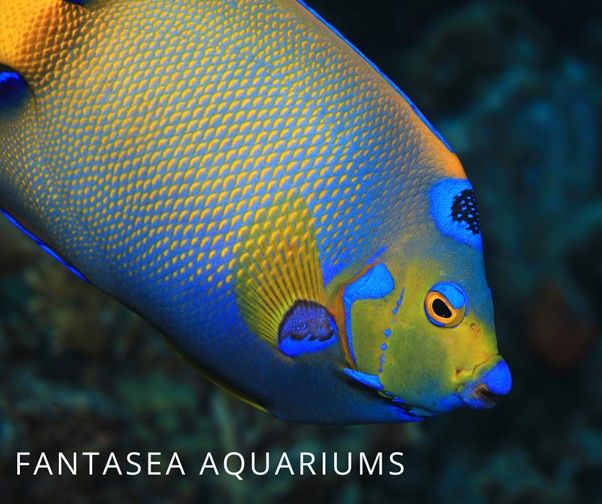
Flame angelfish (Centropyge loriculus)
Another pygmy angelfish makes the list. The flame angel is probably the second most popular species, behind the previously mentioned coral beauty, and it’s easy to see why. Its striking orange coloration makes this small species a real eye-catcher!
Like their coral beauty cousins, flame angelfish grow to a maximum size of around 4”. They are suitable for aquariums of 70 gallons and up, making alright community members, although it’s often recommended to add them last.
Feed your flame angelfish a varied diet of commercial pellets or flakes, meaty foods and plant-based options like spirulina or seaweed sheets. If you see your pygmy angelfish nipping at corals or clams, you might need to up your feedings, as this can be a sign the fish is underfed.
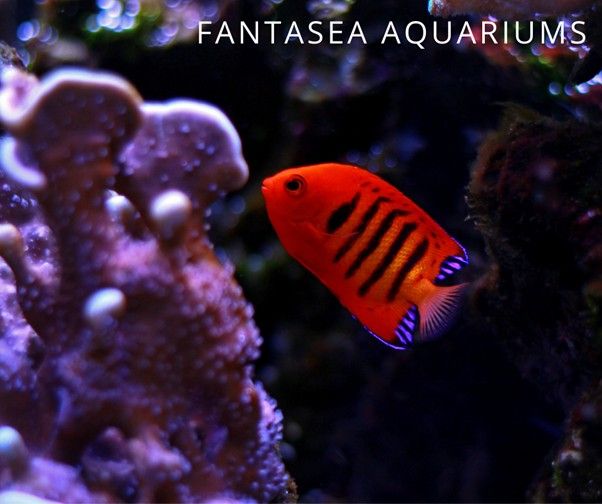
King angelfish (Holacanthus passer)
If we discuss the queen angelfish, it only seems logical to talk about the king as well! Looking for something a bit bigger than those tiny pygmy angels? If you’re an experienced aquarist with plenty of space to spare, the king angelfish might be for you. Naturally found in the waters around Central America, this species truly deserves its name.
The black velvet angelfish is usually recommended for fish only with live rock systems, as they do tend to nip at some corals while grazing. As for other tankmates, like its cousin, it can be on the aggressive side. Combine it with other assertive fish.
Like the queen angelfish, king angels naturally feed mostly on sponges. In the aquarium this can be replaced by a variety of both meaty and plant-based foods. Do keep in mind that as with some other marine fish species, it can be a bit difficult at first to get these guys to eat in captivity.

Potter’s angelfish (Centropyge potteri)
One more just ‘cause we just can’t get enough of them: another pygmy species from the genus Centropyge. This one, the Potter’s angelfish, features a lovely patterned mix of blue and yellow coloration. At 3” in length it’s a bit smaller than the other pygmy angels we’ve mentioned so far, making it a good choice for aquariums of 65 gallons or up.
Potter’s angelfish care is pretty similar to that of its other cousins from the genus Centropyge. It’s tentatively reef safe and usually behaves, although many recommend making it the last species added to the tank. Do avoid other pygmy angelfish, though, or territorial squabbles are likely to erupt!

Conclusion
Whether you go for a 250 gallon aquarium with a huge queen angelfish or a humble 65 gal tank with a colorful Potter’s, angels are staples of the aquarium hobby.
If you’re unsure how to go about setting up your own fish tank or simply lack the time, FantaSEA Aquariums can help! Contact us here with your ideas.

